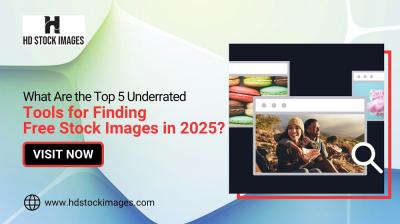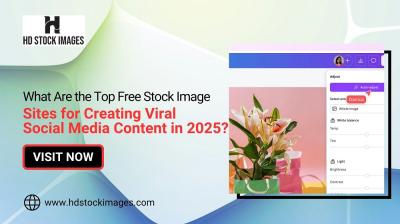Have you ever wondered about the corporate ownership of LinkedIn? With social media platforms constantly evolving and merging, it’s easy to get confused. Many people mistakenly believe that LinkedIn is owned by Facebook due to the competitive landscape of social networking. In this post, we'll clarify the ownership of
The Corporate Structure of LinkedIn

LinkedIn, the world’s largest professional networking platform, was founded in 2002 by Reid Hoffman and a team of co-founders. It quickly grew in popularity, becoming a go-to resource for professionals looking to connect, share, and grow their careers. But as it stands today, it is not under the ownership of Facebook. So, who owns LinkedIn, and how does its corporate structure function?
In 2016, LinkedIn was acquired by Microsoft for a staggering $26.2 billion. This acquisition marked a significant shift in the landscape of social media and professional networking. Microsoft saw LinkedIn as a valuable asset to enhance its cloud offerings and productivity tools. Here’s a brief breakdown of
- Microsoft Corporation: As the parent company, Microsoft integrates LinkedIn into its suite of products, including Microsoft Office and Azure. This integration allows for seamless connections between users' professional networks and productivity tools.
- LinkedIn Corporation: Operating as a subsidiary of Microsoft, LinkedIn retains its own management team and continues to function independently. This means LinkedIn can innovate and develop features that cater specifically to professionals without being heavily influenced by Microsoft’s other business priorities.
- Leadership Team: LinkedIn's CEO, Ryan Roslansky, leads the company with a vision focused on enhancing user experience and expanding its global reach. The leadership team is empowered to make strategic decisions that align with LinkedIn's mission to connect the world's professionals.
LinkedIn’s structure allows it to maintain its unique identity and core functionalities while benefitting from Microsoft’s resources. This relationship enhances LinkedIn's capabilities, enabling features like
Moreover, LinkedIn has continued to expand its services and features to serve a wider audience. From job postings to content sharing and professional networking, the platform has evolved significantly since its inception. In recent years, LinkedIn has also focused on improving user engagement through features like Stories, video content, and enhanced analytics tools for businesses.
In conclusion, while LinkedIn has a robust and complex corporate structure, it is important to remember that it is owned by Microsoft, not Facebook. Understanding this relationship helps clarify how LinkedIn operates and evolves in the competitive landscape of professional networking. This knowledge can be particularly useful for job seekers, businesses, and professionals aiming to leverage the platform for networking and career advancement.
Also Read This: How to Delete Education on LinkedIn: Updating Your Profile for Accuracy
3. Facebook's Ownership: A Quick Overview
When we think about the giants of social media, Facebook often tops the list. Founded by Mark Zuckerberg in 2004, Facebook has grown from a college networking site to a global phenomenon. But here's the catch: Facebook does NOT own LinkedIn. Instead, they are two separate entities with different focuses, missions, and ownership structures.
Facebook, which has rebranded itself as Meta Platforms, Inc., is primarily a social networking service that connects friends, families, and communities. Over the years, it has acquired several companies, including Instagram and WhatsApp, expanding its reach and influence in the digital landscape. Yet, LinkedIn remains a distinct platform that operates independently, owned by Microsoft since 2016.
So, how did Microsoft end up with LinkedIn? The tech giant purchased LinkedIn for a whopping $26.2 billion, recognizing its potential as a professional networking platform. This strategic acquisition allowed Microsoft to integrate LinkedIn's networking capabilities with its suite of productivity tools, enhancing its value proposition to business users.
As you can see, understanding corporate ownership in the tech world can be a bit of a maze. Companies are constantly buying and merging, but in the case of LinkedIn and Facebook, they remain firmly in their respective corners of the social media ring.
Also Read This: Why LinkedIn Is the Top Professional Business Networking Platform
4. Key Differences Between LinkedIn and Facebook
While both LinkedIn and Facebook are social platforms, they cater to vastly different audiences and purposes. Here’s a quick breakdown of how they differ:
- Purpose: LinkedIn is primarily a professional networking site designed for business connections, job searching, and career development. Facebook, on the other hand, is geared toward social interaction, allowing users to share personal updates, photos, and engage with friends and family.
- Content Type: On LinkedIn, you’ll find content focused on industry news, career advice, and professional achievements. Facebook is more about personal stories, memes, and casual updates, making it a more diverse content platform.
- Target Audience: LinkedIn users are often professionals, job seekers, and businesses looking to network or recruit. Facebook’s user base is broad, encompassing various demographics, interests, and age groups.
- Privacy and Data Sharing: LinkedIn places a strong emphasis on professional branding and career development, leading to more transparency in user profiles. Facebook has faced criticism over privacy issues and data sharing policies, affecting how users perceive their information on the platform.
- Monetization: LinkedIn generates revenue through premium subscriptions, job postings, and training courses. Facebook relies heavily on advertising revenue, targeting users based on their interaction habits and interests.
To sum it up, while LinkedIn and Facebook may share the social media space, they serve different purposes and audiences. Understanding these distinctions can help you navigate each platform effectively, whether you're seeking career opportunities or just catching up with friends.
Also Read This: Can People See When You Search Them on LinkedIn? Exploring Privacy Settings
5. Understanding the Relationship Between LinkedIn and Facebook
It’s easy to mix up the relationships between social media platforms, especially when we see them all competing for our attention. LinkedIn and Facebook, while both prominent players in the social networking space, serve very different purposes and are owned by different companies. But how do they relate to each other?
Firstly, LinkedIn is a professional networking site, primarily aimed at connecting professionals, job seekers, and businesses. On the other hand, Facebook is a more general social platform focused on personal connections and sharing a variety of content. This fundamental difference in their mission shapes how they operate and who they cater to.
LinkedIn was acquired by Microsoft in 2016 for a whopping $26.2 billion. This purchase was part of Microsoft’s strategy to enhance its presence in the professional space, complementing products like Office 365 and Dynamics. Meanwhile, Facebook, founded by Mark Zuckerberg, has continued to grow into a massive social network with over 2.9 billion monthly active users.
While LinkedIn and Facebook don’t belong to the same corporate umbrella, they occasionally intersect when it comes to user behavior. For example:
- Recruitment and Job Searching: Many employers use Facebook to promote job listings, while LinkedIn is often the go-to platform for job seekers and professional networking.
- Content Sharing: Users may share LinkedIn articles on Facebook to reach a broader audience, blending professional insights with personal connections.
- Advertising: Both platforms offer robust advertising tools, but they target different demographics. LinkedIn ads are oriented toward professionals, whereas Facebook ads cater to a more diverse audience.
In terms of functionality, LinkedIn has introduced features like LinkedIn Stories (similar to Facebook Stories) to keep users engaged, showcasing that while their core functions differ, they do observe each other’s trends and user preferences.
In summary, while LinkedIn and Facebook are indeed different entities with distinct ownership and purposes, they reflect the evolving landscape of social networking. Their relationship is more about coexisting and occasionally intersecting in the digital world rather than competing directly for the same audience.
6. Conclusion: Who Owns LinkedIn?
To wrap things up, the question “Is LinkedIn owned by Facebook?” can be definitively answered with a resounding no. LinkedIn is owned by Microsoft, a tech giant that has strategically integrated LinkedIn into its suite of professional tools.
This ownership allows Microsoft to leverage LinkedIn’s vast professional network to create a more cohesive ecosystem of productivity tools. By combining LinkedIn’s networking capabilities with Microsoft Office products, they facilitate seamless collaboration among teams and improve the recruitment process for businesses.
As business and technology continue to evolve, LinkedIn’s role as a professional networking site will likely only become more critical. From job hunting to industry networking, it stands apart from Facebook, which continues to cater more towards personal interactions and community engagement.
So the next time you’re browsing LinkedIn or scrolling through Facebook, remember that they are separate entities with unique missions. Understanding their distinct roles helps clarify how they fit into our professional and personal lives.
In conclusion, while LinkedIn is not owned by Facebook, its ownership by Microsoft positions it as a leader in professional networking, distinctly separate from Facebook’s social media empire. Each platform plays its own unique role in the digital landscape, meeting different user needs.
 admin
admin








